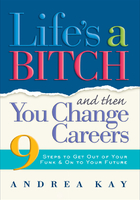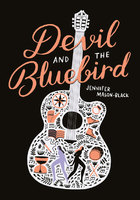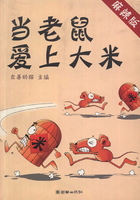HOW OCCUPY WALL STREET CHANGES EVERYTHING SARAH VAN GELDER
"We fail to understand why we should have to pay the costs of the crisis, while its instigators continue to post record profits. We're sick and tired of one injustice after another. We want human dignity back again.
This isn't the kind of world we want to live in, and it's we who have to decide what world we do want. We know we can change it, and we're having a great time going about it."
From #HowToCamp by the Spanish indignados, whose occupations in cities throughout Spain helped inspire Occupy Wall Street
Something happened in September 2011 so unexpected that no politician or pundit saw it coming.
Inspired by the Arab Spring and uprisings in Europe, sparked by a challenge from Adbusters magazine to show up at Wall Street on September 17 and "bring a tent," and encouraged by veteran New York activists, a few thousand people gathered in the financial district of New York City. At the end of the day, some of them set up camp in Zuccotti Park and started what became a national-and now international-movement.
The Occupy movement, as it has come to be called, named the source of the crises of our time: Wall Street banks, big corporations, and others among the 1% are claiming the world's wealth for themselves at the expense of the 99% and having their way with our governments. This is a truth that political insiders and the media had avoided, even while the assets of the top 1% reached levels not seen since the 1920s. But now that this genie is out of the bottle, it can't easily be put back in.
Without offices, paid staff, or a bank account, Occupy Wall Street quickly spread beyond New York. People gathered in Boston, Chicago, Los Angeles, Portland, Atlanta, San Diego, and hundreds of other cities around the United States and claimed the right of we the people to create a world that works for the 99%. In a matter of weeks, the occupations and protests had spread worldwide, to over 1,500 cities, from Madrid to Cape Town and from Buenos Aires to Hong Kong, involving hundreds of thousands of people.
The Occupy Wall Street movement is not just demanding change. It is also transforming how we, the 99%, see ourselves. The shame many of us felt when we couldn't find a job, pay down our debts, or keep our home is being replaced by a political awakening. Millions now recognize that we are not to blame for a weak economy, for a subprime mortgage meltdown, or for a tax system that favors the wealthy but bankrupts the government. The 99% are coming to see that we are collateral damage in an all-out effort by the super-rich to get even richer.
Now that we see the issue clearly-and now that we see how many others are in the same boat-we can envision a new role for ourselves. We will no longer be isolated and powerless. We can hold vigils all night when necessary and nonviolently face down police. We are the vast majority of the population and, once we get active, we cannot be ignored. Our leaders will not fix things for us; we'll have to do that ourselves. We'll have to make the decisions, too. And we'll have to take care of one another-provide the food, shelter, protection, and support needed to make it through long occupations, bad weather, and the hard work of finding consensus when we disagree.
By naming the issue, the movement has changed the political discourse. No longer can the interests of the 99% be ignored. The movement has unleashed the political power of millions and issued an open invitation to everyone to be part of creating a new world.
Historians may look back at September 2011 as the time when the 99% awoke, named our crisis, and faced the reality that none of our leaders are going to solve it. This is the moment when we realized we would have to act for ourselves.
The Truth is Out: The System is Rigged in Favor of the Wealthy
One of the signs at the Occupy Seattle protest reads: "Dear 1%. We were asleep. Now we've woken up. Signed, the 99%."
This sign captures the feeling of many in the Occupy movement. We are seeing our ways of life, our aspirations, and our security slip away-not because we have been lazy or undisciplined, or lacked intelligence and motivation, but because the wealthiest among us have rigged the system to enhance their own power and wealth at the expense of everyone else.
Critics of the movement say they oppose the redistribution of wealth on principle. But redistribution is exactly what has been happening for decades. Today's economy redistributes wealth from the poor and middle class to those at the top. The income of the top 1% grew 275 percent between 1979 and 2007, according to the Congressional Budget Office. For those in the bottom 20 percent, income grew just 18 percent during those twenty-eight years.
The government actively facilitates this concentration of wealth through tax breaks for corporations and the wealthy, and bailouts for giant banks and corporations. These entities also benefit from mining rights, logging rights, airwave rights, and countless other licenses to use common assets for private profit. Corporations shift the costs of environmental damage to the public and pocket the profits. Taxpayers bear the risk of global financial speculation while the payoffs go to those most effective at gaming the system. Instead of investing profits to provide jobs and produce needed goods and services, the 1% put their wealth into mergers, acquisitions, and more speculation.
The list of government interventions on behalf of the 1% goes on and on: Tax breaks favor the wealthy, global trade agreements encourage offshoring jobs, agricultural subsidies favor agribusiness over family farms, corporate media get sanctioned monopolies while independent media gets squeezed.
The people who go to work producing things we need-the middle class and working poor-pay the price for all this. Speculative profits act as a drain on the economy-like a hidden tax. This hidden tax is one of the many reasons the middle-class standard of living has been slipping.
This lopsided division of wealth corrupts government. Few among the 99% now believe government works for their benefit-and for good reason. With the 1% commanding an army of lobbyists and doling out money from multimillion-dollar campaign war chests, government has become a source of protection and subsidies for Wall Street. No wonder there isn't enough money left over for education, repairing roads and bridges, taking care of veterans and retirees, much less for the critical transition we need to make to a clean energy future.
The system is broken in so many ways that it's dizzying to try to name them all. This is part of the reason why the Occupy movement hasn't created a list of demands. The problem is everywhere and looks different from every point of view. The one thing the protesters all seem to agree on is that the middle-class way of life is moving out of reach. Talk to people at any of the Occupy sites and you'll hear stories of people who play by the rules, work long hours, study hard, and then find only low-wage jobs, often without health care coverage or prospects for a secure future.
And many can find no job at all. In the United States, twenty-five million people are unemployed, underemployed or have given up looking for work. Forty-five percent of those without jobs have been unemployed for more than twenty-seven weeks. Some employers won't hire anyone who is currently unemployed. Meanwhile, the cost of health care, education, rent, food, and energy continues to rise; the only thing that's falling is the value of homes and retirement funds.
Behind these statistics are real people. Since the Occupy movement began, some who identify themselves as part of the 99% have been posting their stories at wearethe99percent.tumblr.com. Here's one: "I am a lucky one. I have enough money to eat three of four weeks of the month. I have been paying student loans for fifteen years and still no dent. My husband lost his job...Last year I took a 10 percent pay cut to 'do my share' and keep layoffs at bay. I lost my house. I went bankrupt. I still am paying over one thousand dollars in student loans for myself and my husband and that is just interest. We will not have children. How could we when we can't even feed ourselves? I am the 99%."
Another personal story, by a sixty-year-old, reads, "Got laid off. Moved two thousand miles for new job. Pays 40 percent less than old job. Sold home at a loss. Filed Chapter Eleven. Owe IRS fifty thousand dollars. Fifteen thousand dollar per year debt for son's tuition at state university. Seventy-five percent of retirement funds shifted to the 1%! I am the 99%!"
The Web site contains thousands of stories like these.
Now that we know we are not alone, we are less likely to blame ourselves when things are hard. And now that we are seeing the ways the system is rigged against us, we can join with others to demand changes that will allow everyone to thrive.
We the People Now Know That We Have the Right, and the Power
The power of the Occupy Wall Street movement is rippling out far beyond the people camped at Zuccotti Park in lower Manhattan, and even beyond the occupation sites springing up in cities around the world. This movement is reaching people who are carrying a protest sign for the first time, including some conservatives, along with union members who have been fighting a losing battle to maintain their standard of living.
Hundreds of thousands have participated in the protests and occupations, millions support the occupations, and tens of millions more support their key issues. Polls show that jobs continues to be the issue that most concerns us, yet the national dialogue has been dominated by obsession with debt. While just 27 percent of Americans responding to an October 2011 Time Magazine poll held a favorable view of the Tea Party, for example, 54 percent held a favorable view of the Occupy Wall Street movement. Of those familiar with the protests, large majorities share their concerns: 86 percent agreed that Wall Street and lobbyists have too much power in Washington, DC, 68 percent thought the rich should pay more taxes, and 79 percent believe the gap between rich and poor has grown too large.
The movement has been criticized for its diversity of people and grievances, but in that diversity lies its strength. Among the 99% are recent graduates and veterans who can't find work, elderly who fear losing their pensions, the long-term unemployed, the homeless, peace activists, people with a day job in a corporate office who show up after work, members of the military, and off-duty police. Those involved cannot be pigeonholed. They are as diverse as the people of this country and this world.
The movement has also been criticized for its failure to issue a list of demands. In fact, it is easy to see what the movement is demanding: quite simply, a world that works for the 99%. The hand-lettered protest signs show the range of concerns: excessive student debt; banks that took taxpayer bailouts, then refused to help homeowners stay in their homes; cuts in government funding for essential services; Federal Reserve policies; the lack of jobs.
A list of specific demands would make it easier to manage, criticize, co-opt, and divide the movement. Instead, Occupy Wall Street is setting its own agenda on its own terms and developing consensus statements at its own pace. It's doing this in spaces that it controls-some in parks and other public spaces, others in union halls, libraries, churches, and community centers. On the Internet, the movement issues statements and calls to action through Twitter, Facebook, and its own Web sites. From the start it was clear that the movement would not rely on a mainstream media corrupted by corporate interests.
The Occupy Wall Street movement does not treat power as something to request-something that others can either grant or withhold. We the people are the sovereigns under the Constitution. The Occupy Wall Street movement has become a space where a multitude of leaders are learning to work together, think independently, and define the world we want to live in.
Those leaders will be stirring things up for years to come.
This Is What Horizontal Power Looks Like
When political parties talk about building a base, they usually mean developing foot soldiers who will help candidates win election and then go home to let the elected officials make the decisions. The Occupy Wall Street movement turns that idea on its head. The ordinary people who have chosen to be part of this movement are the ones who debate the issues, determine strategies, and lead the work.
Working groups take care of practical matters like food, sanitation, media, meeting facilitation, and receiving packages from supporters. Other groups discuss the issues, create arts and culture, debate tactics, and consider whether to issue demands. In Zuccotti Park, the Consciousness Working Group set up a permanent sacred space for prayer and meditation; spiritual leaders from various faiths show up to lead observances. The early weeks of the occupation coincided with Yom Kippur, and a thousand Jewish activists participated in services across from Zuccotti Park. They erected in the park a sukkah, a temporary hut built to represent the impromptu housing Israelites used in the desert when escaping Egypt. Because the building of structures at Zuccotti Park is forbidden, this was an act of civil disobedience.
At the center of this movement are general assemblies, where decisions are made by consensus. Facilitators are charged with managing the process so that all have a chance to be heard and everyone has a chance to express approval, disapproval, or to block consensus by means of hand signals.
The use of the people's microphone is a central feature of the general assemblies. To use the people's mic, a person first grabs the attention of the crowd by shouting, "Mic check!" Then, he or she begins to speak, saying a few words at a time, so that others can shout the words on to those behind them in the crowd.
Originally developed as a way to circumvent bans on amplification at many occupation sites, the people's mic has developed into much more than that. It encourages deeper listening because audience members must actively repeat the language of the speaker. It encourages consensus because hearing oneself repeat a point of view one doesn't agree with has a way of opening one's mind. And it provides a great example of how community organizing works best when it's people-powered and resilient. This technique allows crowds of thousands to communicate, and also allows groups involved in direct street action to make democratic decisions on the fly.
The occupation zones are not just places to talk about a new society. They are becoming twenty-four-hour-a-day experiments in egalitarian living. Without paid staff or hierarchies, everyone gets fed, laundry gets done by the truckload, disagreements get facilitated, and those arrested are greeted by crowds of cheering supporters when they get out of jail.
Cynics might question the importance of this deepening sense of community. But people who have lived in a competitive, isolating world are tasting a way of life built on support and inclusion, in some cases for the first time. They are sharing the risk of police beatings, arrests, and pepper spray, and the hardship of sleepless nights in a rainy or snowy park. The resulting bonds create strength, solidarity, and resolve. Visitors report being surprised to see smiles instead of anger. This is a movement where you often hear the words, "I love you."
That experience of community is not easily forgotten, and it deepens the yearning for a new culture; one that is radically inclusive, respectful, supportive, and horizontal.
What Next?
The organizers of the September 17 occupation say they weren't planning for an occupation that would go on week after week. It just hadn't occurred to them. And no one can say where things will go from here. Harsh weather could drive people away. Other hazards could undercut the movement. Police violence could frighten away would-be protesters, or it could galvanize the movement, as did the pepper spraying of unarmed women in Manhattan and police violence against occupiers in Oakland.
Another threat to the movement is violence on the part of the occupiers themselves, which would be used to justify police action and likely turn press coverage against the occupations. With increasing tensions and exhausted protesters, the nonviolent discipline of this movement will be severely tested.
Violence could also come from provocateurs seeking to discredit the Occupy movement. Within a month of the movement's launch there was a case of an admitted provocateur, an assistant editor at the right-wing magazine American Spectator, who tried, without success, to get Occupy and anti-war protesters to join him in pushing past security guards at the Smithsonian Museum of Air and Space in Washington, DC. Fortunately, the crowd refused to follow. Security guards responded by pepper spraying protesters, and the museum was closed for some hours. Most news reports attributed the scuffle to Occupy Wall Street protesters.
But the movement has important strengths that add to its resilience. It is radically decentralized, so a disaster at any one occupation will not bring down the others; in fact, the others can take action in support. There is no single leader who could be co-opted or assassinated. Instead, leadership is broadly shared, and leadership skills are being taught and learned constantly.
What's more, the autonomous groups within the movement that plan and carry out direct actions of all sorts are extremely difficult to contain. By choosing the targets of their actions wisely, they can further draw attention to institutions whose behavior calls into question their right to exist. When the legitimacy of large institutions crumbles, it is often just a matter of time before the support of government, stockholders, customers, and employees goes away, too. There is no institution that is "too big to fail." This is one way that nonviolent revolution happens.
New support is flowing in, some from unexpected sources. A group of Marine veterans has formed OccupyMARINES, which will work to recruit police and members of other branches of the military to support the occupations, and to nonviolently protect protesters from police assaults. The Marines also plan to help the occupations sustain themselves through cold weather. The group was inspired by a viral video showing Marine Sergeant Shamar Thomas dressing down the police for brutalizing protesters. "There is no honor in this," he shouted at the police. The wounding of Marine veteran Scott Olsen, who at twenty-four years old had already served two tours in Iraq, has further fired up fellow Marines. Olsen was critically injured by a police-fired projectile in an Oakland police action against occupiers.
Police, though often shown cracking down on occupations, have also expressed sympathy with the movement. In Albany, New York, state and city police declined to follow orders from the mayor to arrest and remove peaceful protesters. "We don't have those resources, and these people were not causing trouble," an official with the state patrol told the Times Union newspaper.
Will there come a time when there is no one willing to enforce orders to evict members of the 99% from occupation encampments-or from their homes, for that matter? And if popular support grows, will elected officials look to ally themselves with the movement, rather than suppress it? The fact that these are even questions shows how radically things have changed since a few hundred people occupied Zuccotti Park on September 17, 2011.
Whatever happens next, Occupy Wall Street has already accomplished something that changes everything. It has fundamentally altered the national conversation.
"A group of people started camping out in Zuccotti Park, and all of a sudden the conversation started being about the right things," says The New York Times columnist Paul Krugman. "It's kind of a miracle."
Now that millions recognize the injustice resulting from the power of Wall Street and giant corporations, that issue will not go away. The central question now is this: Will we build a society to benefit everyone? Or just the 1%?
The world becomes a very different place when members of the 99% stand up. The revolts in Egypt, elsewhere in the Middle East, and in Europe belie the story that popular uprisings are futile. The people occupying Zuccotti Park in lower Manhattan and in cities across the country have showed that Americans, too, can take a stand.
People who've experienced the power of having a voice will not easily go back to silence. People who've found self-respect will work hard to avoid a return to isolation and powerlessness; the Occupy Wall Street movement gives us reason to believe that we the people can take charge of our destinies. The 99% are no longer sitting on the sidelines of history-we are making history.
Sarah van Gelder is co-founder and executive editor of YES! Magazine and YesMagazine.org.
This introduction and the list on the following page, "10 Ways the Occupy Movement Changes Everything," are each available, separately or together, under a Creative Commons Attribution NoDerivs (CC BY-ND) license, which allows for redistribution, commercial and non-commercial, as long as they are passed along unchanged and in whole, with credit to their original publication in this book. Digital versions of the "10 Ways" list and other resources from this book can be found at yesmagazine.org/owsbook.















